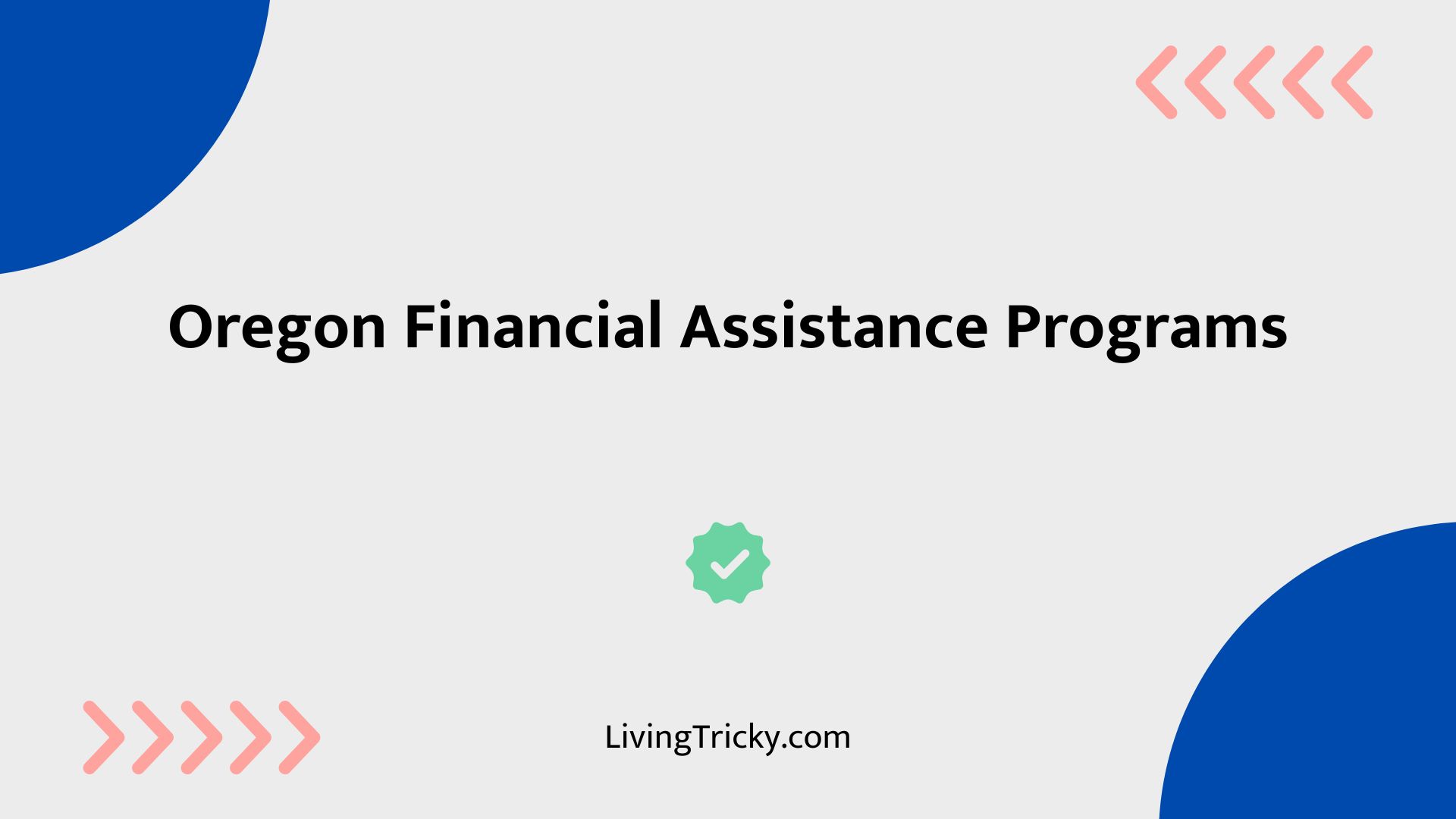While Oregon is known for its stunning natural beauty, many of its residents struggle to make ends meet. You’re not alone if you’re facing financial difficulties, and the state offers a range of programs to help. From cash assistance and employment support to food, nutrition, and education aid, Oregon provides a safety net for those in need. But which programs are available, and how can you access them? Let’s take a closer look at the financial assistance programs Oregon has to offer.

Key Takeaways
- Oregon offers cash assistance programs like TANF and ERDC to support low-income families with children.
- Food and nutrition programs, including SNAP, WIC, and Oregon Food Bank, provide access to healthy food and meals.
- Housing and utility assistance programs, such as Section 8 and LIHEAP/OEAP, help with rent and energy costs.
- Oregon Health Plan and Medicare offer health coverage for low-income individuals, children, and seniors.
- Retirement, tax, and veterans benefits, including Social Security and EITC, provide financial support for eligible individuals.
Cash Assistance and Employment Support
Oregon offers various financial assistance programs to support individuals and families in need.
As an Oregon resident, you may be eligible for cash assistance programs like Temporary Assistance for Needy Families (TANF), which provides monthly cash benefits to help with basic living expenses like utility bills and food.
If you’re working or attending school, Employment Related Day Care (ERDC) can help cover childcare costs. These programs aim to support low-income families with children, helping you get back on your feet.
Food, Nutrition, and Education Assistance
When you’re struggling to make ends meet, putting food on the table can be a daily challenge.
However, Oregon offers several programs to help.
The Oregon Food Bank provides free meals, groceries, and produce to those in need.
The Supplemental Nutrition Assistance Program (SNAP) offers monthly food benefits, with an average of $130 per person.
The Women, Infants, and Children (WIC) program supports pregnant women, new mothers, and children up to age five with healthy food and nutrition guidance.
Additionally, the Free School Meals Program offers free or reduced-cost meals to eligible students.
These programs can help you access the nutrition you need.
Housing and Utility Assistance
Having a roof over your head and keeping your home warm or cool can be a significant burden when you’re struggling financially. Fortunately, Oregon offers various housing and utility assistance programs to help.
| Program | Description | Eligibility |
|---|---|---|
| Section 8 Housing | Subsidized housing for low-income families | Income-based, 60% of SMI |
| LIHEAP/OEAP | Financial assistance for heating and cooling costs | Income-based, 60% of SMI |
| Oregon Energy Fund | One-time grants for winter utility bills | Struggling to pay utility bills |
| Affordable Housing Units | Lower-than-average rent apartments | Income-based, built with government assistance |
These programs can provide you with financial assistance for housing and energy bills, helping to alleviate some of the financial stress you may be experiencing.
Medical Assistance and Disability Support
You can access various medical assistance programs in Oregon to help you cover healthcare costs and receive disability support.
Oregon Health Plan (OHP) provides health coverage to low-income people, including children under 19, with benefits like hospital care, mental health treatment, and prescription medications.
If you’re 65 or older, or have a disability, you may be eligible for Medicare. ArrayRx helps reduce prescription medication costs, while Social Security Disability Insurance (SSDI) and Supplemental Security Income (SSI) provide financial support for people with disabilities and elderly individuals with limited income.
Retirement, Tax, and Veterans Benefits
Oregon offers various benefits to support residents in their retirement, provide tax relief, and recognize the service of veterans.
You may be eligible for Social Security Retirement Benefits, which provide monthly financial support based on your earnings history.
The Earned Income Tax Credit (EITC) offers a tax credit for low-income workers, reducing poverty and encouraging work.
As a veteran, you can access education, disability benefits, and housing assistance.
Additionally, you may be eligible for Supplemental Security Income (SSI) or Social Security Disability Insurance (SSDI) if you have a disability or limited income.
These benefits can provide the financial support you need.
Frequently Asked Questions
Who Is Eligible for Cash Assistance in Oregon?
You’re eligible for cash assistance if you’re a resident, unemployed or underemployed, and earn below 185% of the Federal Poverty Level, with income limits varying by family size, and meet citizenship, residency, and work requirements, with exemptions for seniors, disabled individuals, and caregivers.
What Is the Oregon Hardship Grant?
You’re trapped in a crisis, but a lifeline awaits: the Oregon Hardship Grant, a one-time cash grant of up to $3,200, providing emergency relief from domestic violence, offering funding options for urgent needs, supporting low-income individuals in crisis.
What Are the Three Biggest Programs That Assist Low-Income People?
You’ll find that the three largest programs assisting low-income individuals are Medicaid Expansion, Food Stamp benefits, and Earned Income Tax Credit, providing essential support with health insurance, nutrition, and financial stability.
What Benefits Are Available in Oregon?
As you navigate the complexities of financial struggles, a safety net of benefits awaits you in Oregon. You can access child care subsidies, medical assistance programs, food stamp benefits, housing vouchers, energy assistance grants, and more to support your journey towards stability.
Conclusion
As you navigate Oregon’s financial assistance landscape, numerous programs can provide a crucial safety net. From cash and employment support to nutrition and education aid, the state offers a range of resources to help you get back on your feet. With housing, utility, medical, and veteran benefits also available, you can find comprehensive care. By exploring these opportunities, you can pave a path to prosperity, peace of mind, and a promising future.